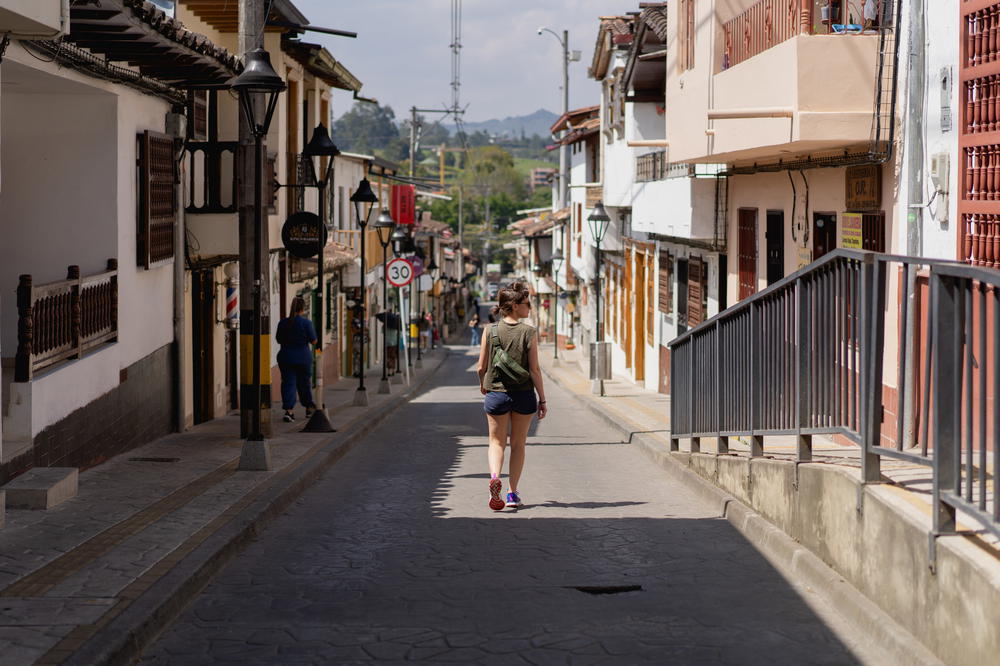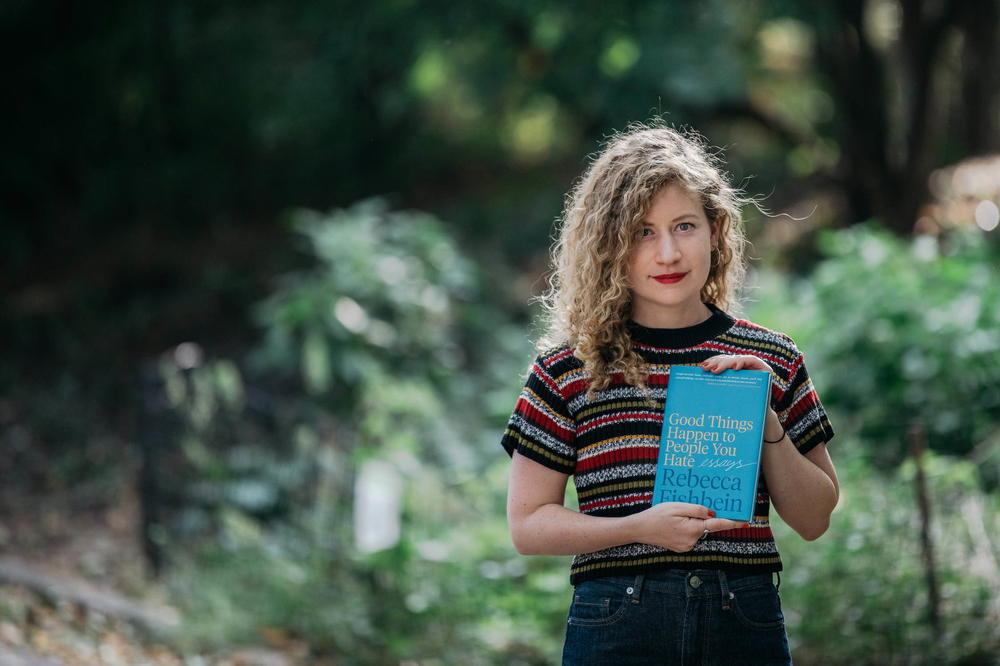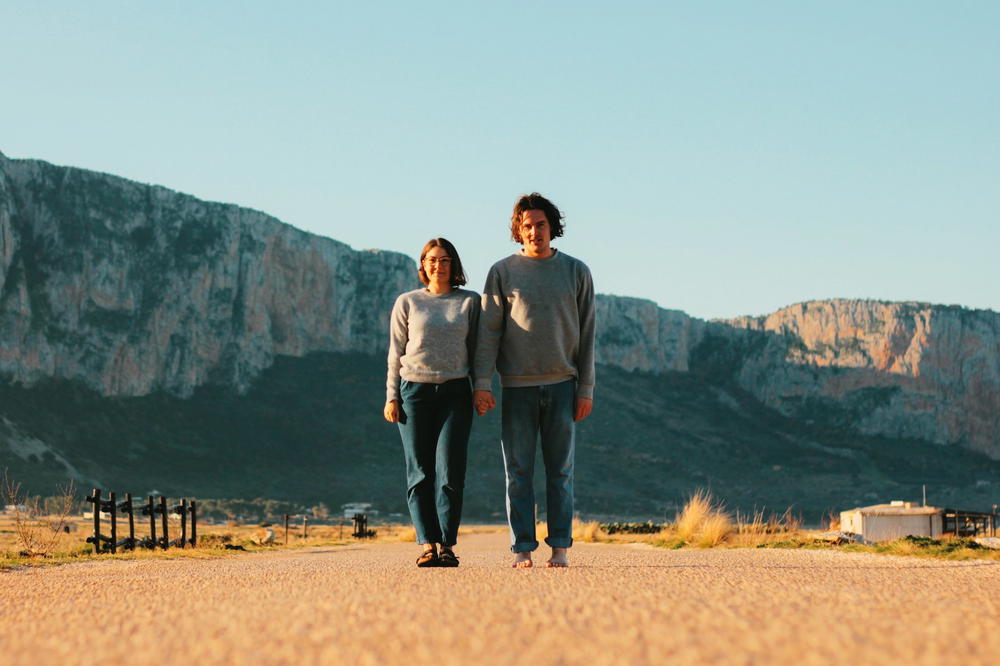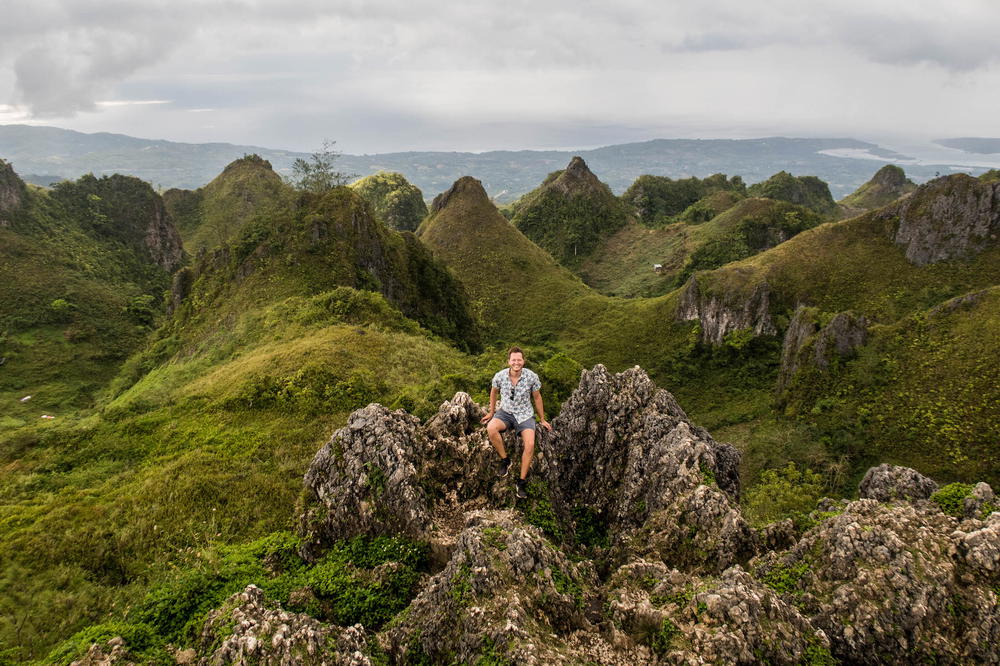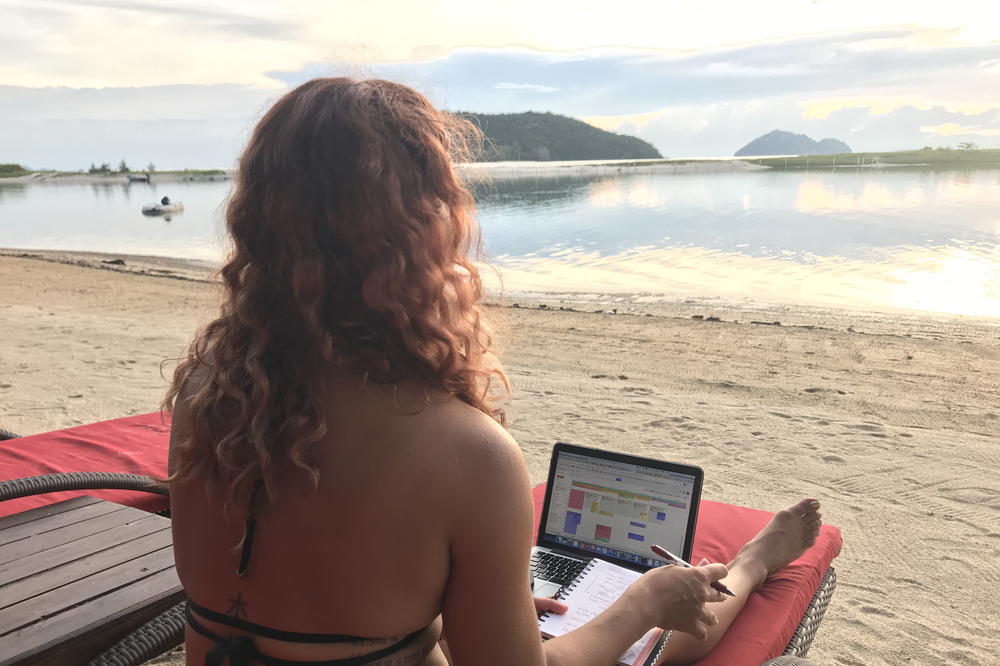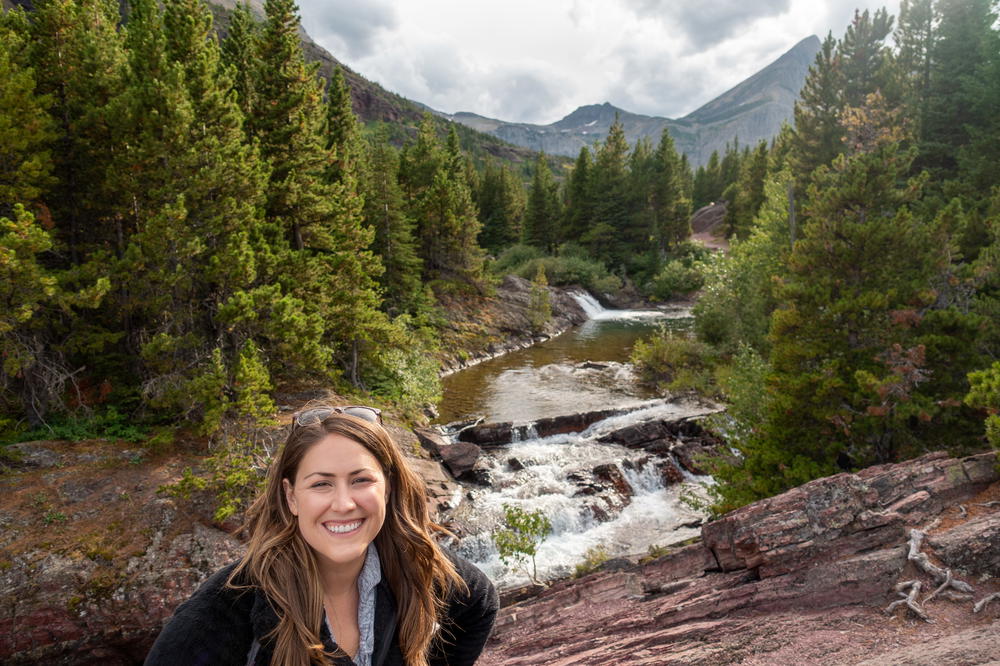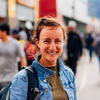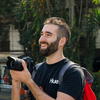Daniel J. Stein: Traveling to Dark Skies for Astrophotography
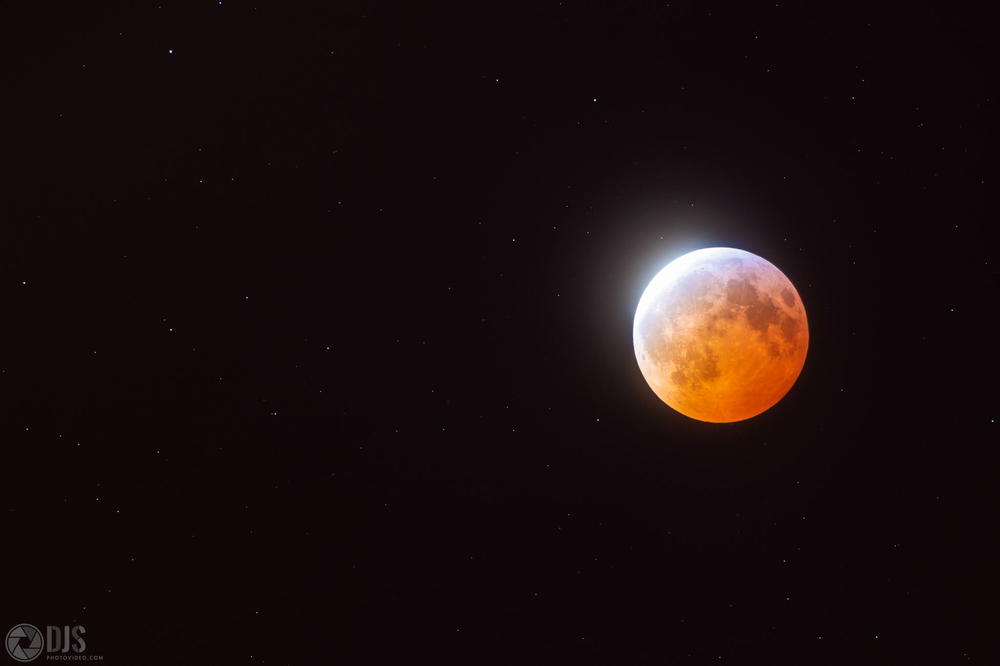
What's it like to travel for dark sky astrophotography? We interview Daniel Stein, a talented photographer who travels to capture eclipses and the Milky Way.
This article may contain affiliate links. We earn a small commissions when you purchase via those links — and it's free for you. It's only us (Becca & Dan) working on this website, so we value your support! Read our privacy policy and learn more about us.
We’re delighted to be able to feature astrophotographer Daniel J. Stein as one of our friends in the photography industry who brilliantly combines travel scenes with fantastical celestial bodies, often at night. His night sky photography is stunning (in our opinion), and looking at his photos, we often wonder how he got to the place where he took them, or what went into the whole photographic process.
Dan Stein is from Becca’s hometown and went to high school with her sister. In recent years, Dan Stein gained a following on Instagram through his starry night photos, lunar and solar eclipse photography and of course, his Pembroke Welsh Corgi, Mick.
We asked Dan to update us on how he got his start, his wildest stories behind how he got the shot he was seeking and more on what an astrophotographer needs to be successful.
Introducing… Dan Stein!
Photography is my hobby, as I am a commercial plumbing contractor working in my family business by day. My photography has inspired me to travel and spread awareness about light pollution, and has also been featured in print and web formats worldwide. I intend to keep this passion as a hobby, as it brings me extreme happiness, allowing me to experience the world with a drive to share it with my friends and family.
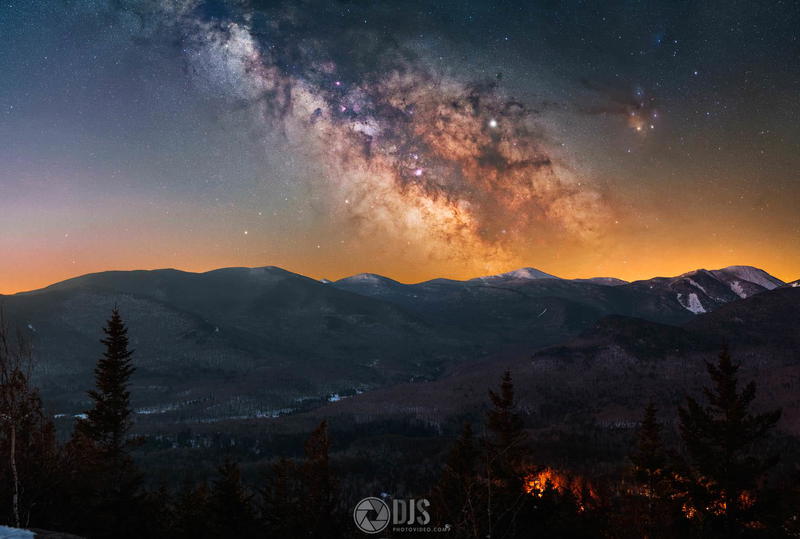
How did you learn to take photos of dark skies, natural occurrences and landscapes?
Astrophotography came to me at an ideal time in my life. I took a GenEd-level Astronomy class during my first semester of college at James Madison University.
The class was being held in my school’s state-of-the-art planetarium, the John C. Wells Planetarium. The class in particular also happened to be led by none other than the Planetarium Director himself.
During the course, we were given the task of illustrating the moon phases using an old school piece of paper and pencil. I asked my professor if I could photograph the Moon instead with my very entry-level camera equipment and he obliged.
After seeing my attempts at imaging our Satellite, he was immediately on board with bringing photography a warm welcome into the planetarium. He offered me a job working at the planetarium with different contingencies to any other staff position.
His vision was to use my skills to document the activities of the planetarium outside of the classroom, to highlight the significance of studying space. This included documenting events such as the Saturday Public shows and Star Talks led by the staff. The Public Star parties, which took place on the East side of the campus where telescopes were set up for celestial viewing, as well as a few other annual events such as a Light Pollution Awareness Week, were open for anyone to attend.
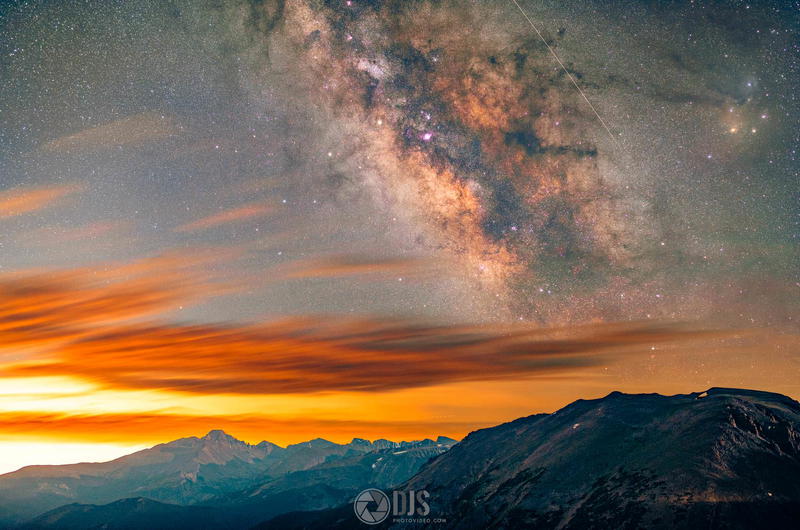
It was during my time working at the planetarium during that first year of college that I wanted to experiment with astrophotography, thanks to the new knowledge I had gained about our cosmos. I quickly learned Astrophotography is not easy to master overnight.
Despite many great guides surrounding the Internet, getting out and shooting to put techniques to the test is a challenge for a number of factors. The chief factor is the weather. Out of 365 days per year, there are only a handful that are viable for shooting the sky. Between the Moon phases, weather, and well, life, each of my imaging sessions throughout the beginning were more like learning experiences than anything else.
This is not to say I have progressed to a point where I know everything — indeed, it is quite the opposite. With each session under the stars, I am experimenting with new techniques, different equipment, new locations, new targets to shoot and more.
The bottom line is that most of the images I have created to this day are a result of many nights executing techniques I had experimented with, on my own, or influenced by other shots I have seen elsewhere. Each night is a learning experience, and each day I have leading up to a night of shooting is understanding what I can do differently from the previous shoot.
What’s always in your bag, and what’s the key gear for dark sky photography when you travel?
A good tripod is the single most crucial piece of equipment when it comes to astrophotography. I use the Gitzo Traveler series 1 and 0 tripods, which are super lightweight, making it easy on my back for hikes. They are also extremely capable and stable for my gear.
Sitting on top of my tripods are iOptron Skyguider Pro portable star tracking devices. These devices, when aligned, will combat the rotation of the Earth and thus allow me to take longer exposures of the stars without them blurring. These units are the second-most important piece of gear next to the tripods.
Next are, of course, the camera bodies themselves. While I primarily shoot with a Nikon D850, I also just acquired a specially astro-modified Sony A7S camera with an active cooling function in it. I also have a Canon 5D Mark III, but this usually stays out of my bag for hikes, to save weight.
For camera lenses, I primarily use the Sigma ART series f/1.4 primes. Astrophotography has a different set of parameters for measuring lens distortion, and the Sigma ARTs (with a few exceptions) tend to do well.
Included camera accessories with all of this are my headlamp with red safelight, which is necessary for keeping your eyes fully dilated a night, remote shutter releases for the cameras, a Really Right Stuff pano head, Gitzo ball heads, spare batteries, cards, a Leatherman multitool, bluetooth speaker, gaffers tape, food, water, a Garmin GPS with emergency SOS function, and last, but not least, a first aid kit.
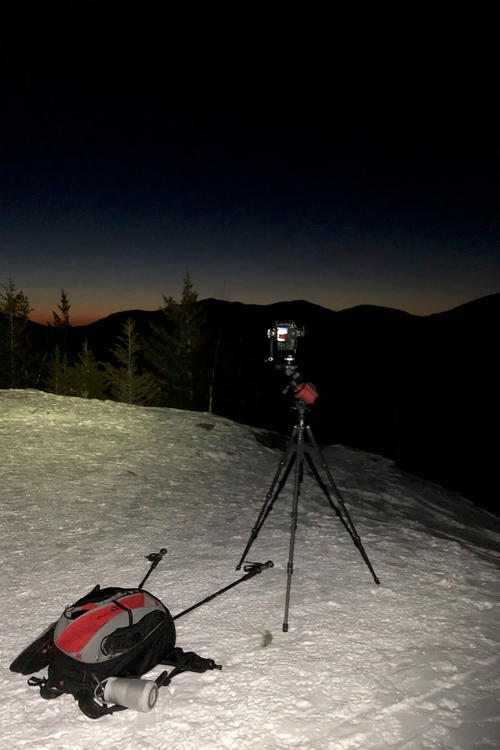
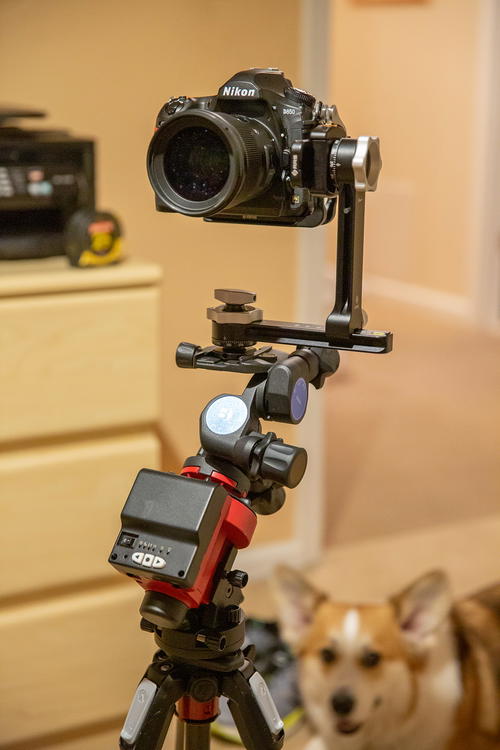
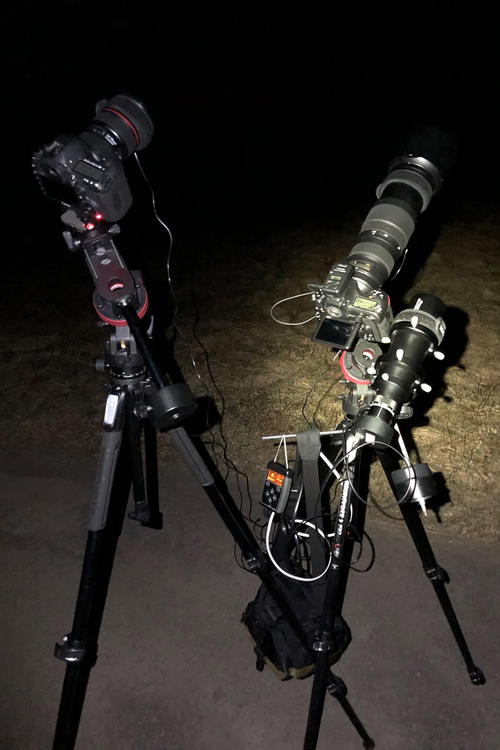
Where have you traveled for the ultimate dark sky and landscape shots, and how do you make travel possible?
I am lucky to be working in my family commercial plumbing business, which makes arrangements for travel pretty straightforward.
While most of my shoots are done on weekends within (somewhat) reasonable driving distance of my home, I do get a week off every now and then to hop on a plane and do some shooting elsewhere.
My favorite locations have been out West (in the USA), as the skies are much darker there than here on the East Coast. The Moab, UT, area in particular has some genuinely dark skies, but as far as landscape goes, Colorado takes the cake so far in the places I have been. The mountainous landscape, coupled with incredibly dark skies, are to die for.
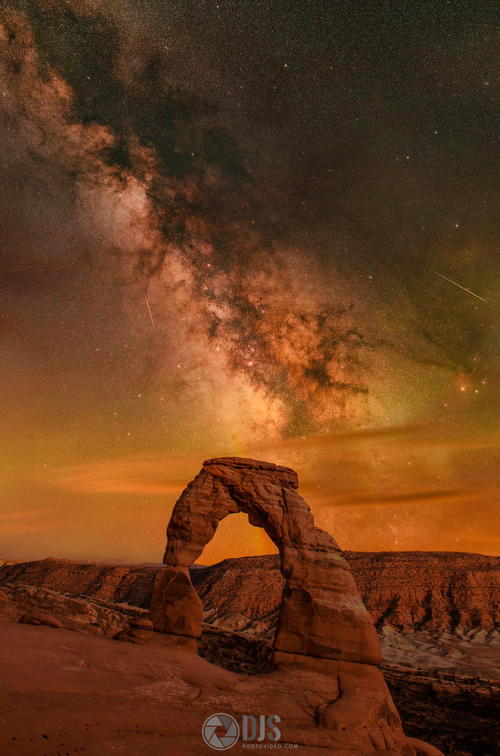
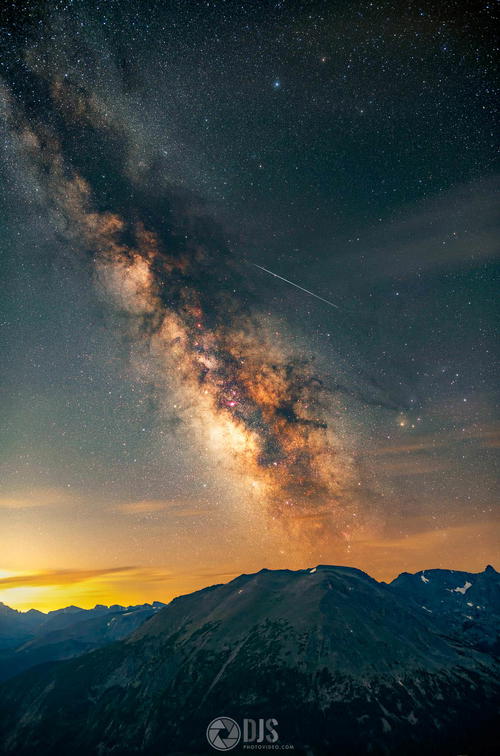
Do you have any crazy stories from photography travel? Do you go alone, or with a buddy or group?
I go alone on these shoots more often than not — this is why a first aid kit and the GPS with SOS function are essential. Sometimes I take a good friend or two who do photography as well.
I have ran into others while shooting at night, even in some of the most remote locations. We would connect with each other once we were within range of cell service, and would talk about our methods of astrophotography throughout the night. I have always had a good experience.
Sure, some nights are more successful than others, but for the most part, each night is fun.
Have you done anything extreme to get the perfect shot?
I would not say I have done anything extreme to get the shot, as I am a safety-first kind of guy, but in general, astrophotography is very spur-of-the-moment. The weather can change within hours of a planned shoot, tarnishing all hopes and dreams of getting that shot. During the Perseids meteor shower last year, this was the case.
I had plans to go up to the Catskills, NY. After checking the weather closely during work, it took a turn for the worst. I called up campsites within the Adirondacks region to see if there was any availability, of which I got lucky.
It was no more than five minutes after work that I found myself driving instead just a few hours away to a now nine-hour round-trip journey. I pitched my tent within seconds in Keene, NY, and then I hit one of the 46 high peaks hikes to catch the shower.
Something like this is pretty routine for astrophotography, as you have to be ready to divert easily and efficiently, and a lack of sleep is usually the side effect.
In terms of traveling for supernatural occurrences like eclipses, how far in advance do you plan? What’s your strategy?
The Great American Solar Eclipse of 2017 was the most amount of planning that when into any one shoot. Given that all hotels, Airbnbs, and other accommodations were well aware that if they had a facility along the path of totality, nearly everything was booked years in advance.
Fortunately, I am a savvy researcher, and I am usually able to weasel my way into a scenario so long as I set my heart on the goal. The Eclipse was no exception, and I was able to plan and score a viable location with a decent average weather report per data from past years.
Events like this are rare, and I will plan a trip like this to the T. When it comes to vacations with a clear emphasis on astronomy, I can usually pull off a well-executed itinerary with a few months’ notice.
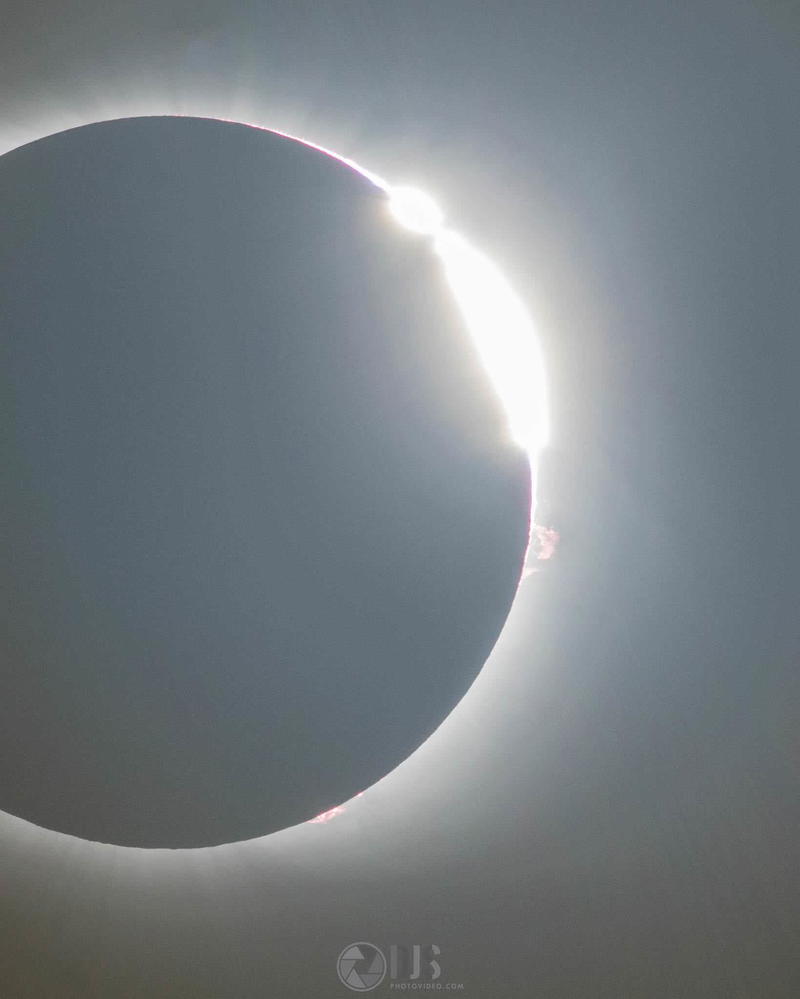
What kind of adrenaline rush do you get from getting the Milky Way or an eclipse in a perfect shot? What does that feel like?
The rush is real. It does not matter how many times I photograph our cosmos — seeing the Milky Way pop up on even just on a test shot sends chills throughout my body.
The first time I saw the Milky Way I cried, and I have to admit that if the location is right, I do shed a tear every now and then. These views are so rare due to light pollution that the image is the cherry on top of the journey that led up to it.
I for sure feel more of a connection to our cosmos when imaging them. I can feel when the exposure clicks and I see the little preview on the screen when “this is the shot.” I love it every time I am out there and I crave more.
The experience of seeing a true nighttime sky is indescribable with using text. It has to be seen to truly withhold it. That’s why I photograph it.
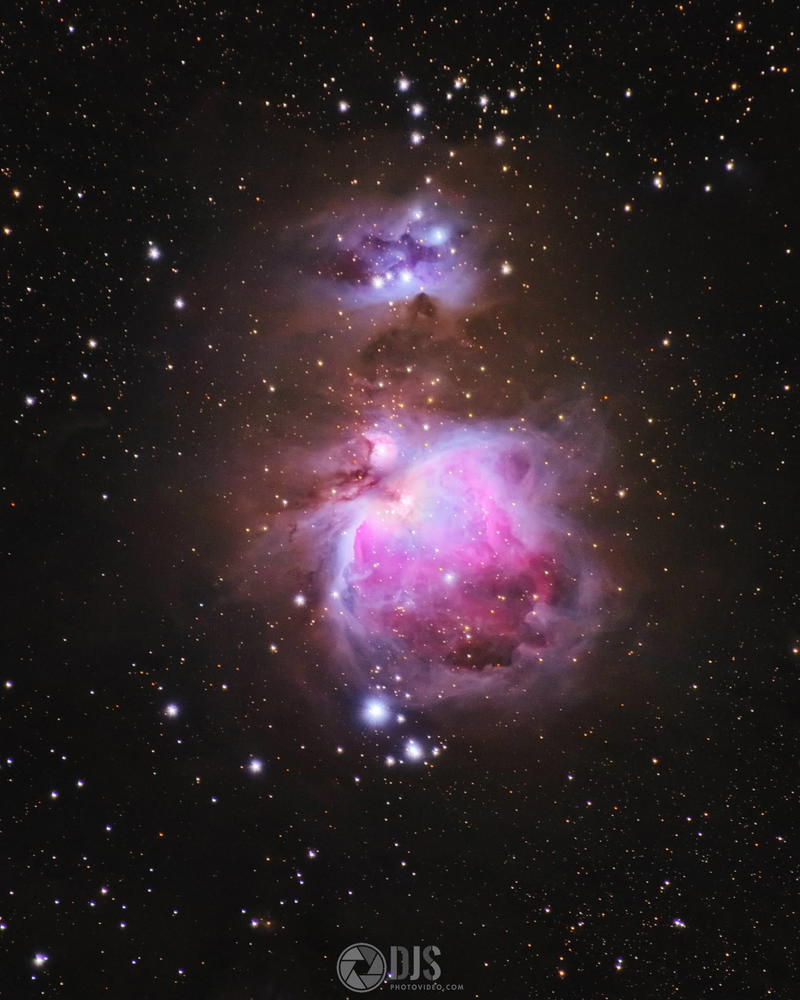
Has weather ever affected a photography trip, either awesomely or not so awesomely?
Weather is a love-hate relationship for all astrophotographers. Sometimes I will see a forecast that shows clear skies and I will arrive on site, only to find that it is completely overcast.
Other times, for example, with the Eclipse in 2017, I get the clear skies I crave every day. Last year, my friends and I embarked on an expedition out west to photograph some national parks. Well, it was monsoon season, which we somehow overlooked, and as a result, only two of our 10 nights were clear enough for shooting.
Occurrences like this are frustrating and not preventable. This is why if the skies are clear, the moon phase is right, and it is a Friday or Saturday night, I am willing to drive absurd distances to get some shots to satisfy my craving.
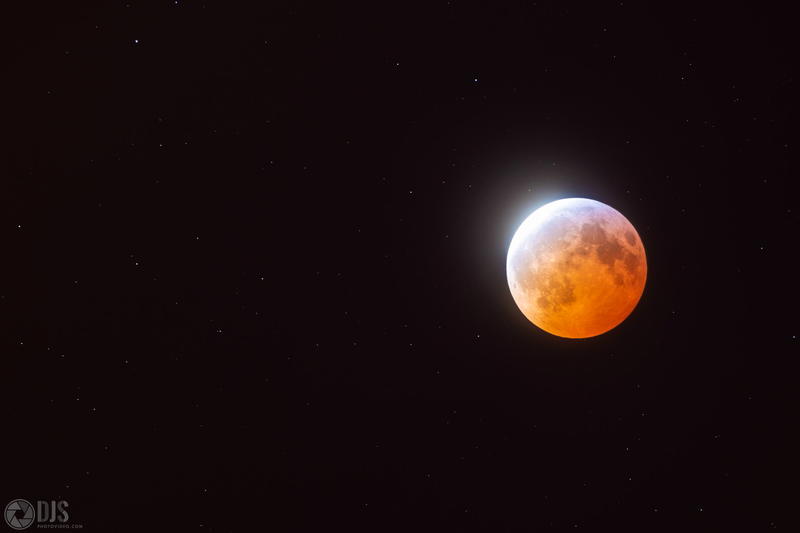
Have you found community among photographers who also travel for natural phenomenons (sounds so exciting!)?
The astrophotography community is well mixed. I have found a plethora of photographers on Instagram who have a similar vision to mine, but because they are all over the world, it is not exactly easy to meet up with these folks and shoot. Still, it’s cool to see what they are doing and how they do it, and it is almost as if we are all working together on a collaborative project to image our skies from around the world.
It is crazy to think that we can take pictures of exactly the same targets as somebody else halfway around the world. That is some halfhalftravel stuff right there, right?!
What do you hope to learn in the next few years in terms of what’s on the horizon (literally and figuratively) for what’s “out there?”
I really want to step up my game in terms of the details in my shots. I need to keep this exciting for me and for the beholder.
I am transitioning to doing what would be a two-shot landscape into a full-fledged 20 or so shot panorama of the night sky with a telephoto lens. Doing so allows for far better transparency of the finer detail within the Dust Lanes of the Milky Way, for example. I want my images to pop — I want the human eye to wonder what it would be like to see an image of mine as if it were real time.
Doing this scope of work is not easy. A panorama by day takes a few minutes, but with long exposures at night on a star tracker, it may take an entire imaging session just to get enough data for one shot.
I am also starting to understand how to image deep space objects (DSO), such as distant galaxies like Andromeda and Nebulae, like the Horsehead & Flame. This type of astrophotography has a heavy emphasis on specialized post-processing software, which I hope to be comfortable with in the coming years, as it is has a steep learning curve compared to conventional software such as Photoshop.
Check out some Photoshop alternatives!
Most importantly, however, is the significance of light pollution. I started this hobby as a means of documenting the end of night. Many of my shots feature a gradient of light on the horizon caused by the unwelcome introduction of too much artificial light at night. I am hopeful that perhaps if my work is seen by the right set of eyes, we can work together to bring back the night. In the meantime, though, I can continue to educate on why it is important to do so and learn more in the process.
Follow astrophotographer Dan Stein
Wow, thank you SO much, Dan, for educating us on what goes into your striking and beautiful photos from around the country.
You can follow Dan’s journeys to dark skies on his:
📓 Thanks for following our story
We use this corner of the site to share milestones and lessons from life on the road. If you're enjoying the peek behind the scenes, a coffee keeps us caffeinated to do more.
Keep the stories comingYou may also like
-
![]()
Why We Don’t Take Vacations to Resorts (What We Do Instead)
We don’t take resort vacations, and we still have great travel experiences. Want to see what we do instead of booking resorts, and why we do it? Read my experience in why I avoid resorts.
-
![A young woman holding a blue book in front of trees.]()
Rebecca Fishbein: Writing Travel into Your Story
How do you tell your travel story through writing a book? Rebecca Fishbein shows us how she went to 'find herself' in South America and wound up being fascinated with abandoned amusement parks.
-
![Two people standing on a road with mountains in the background.]()
Carlie & Pat: Off-the-Beaten Path Van Life Travel
What's it like to take a big trip as a couple in a campervan? Carlie and Pat of @verynicetravels told us how to do a 'van life' trip across Europe, and how to deal with unexpected turns during travel.
-
![A man standing on top of a mountain in the philippines.]()
@germanbackpacker: Building a Bilingual Travel Blog
Patrick from @germanbackpacker is one of our favorite bilingual travel bloggers who has built a dual-language blog and travel website. Check out his thoughts on building content in English or your native language.
-
![]()
How Krystal Pino Founded Nomad Tax: Accounting for Digital Nomads
Krystal Pino started Nomad Tax when she saw that tax services and accounting for digital nomads didn’t exist yet, after working remotely and traveling abroad. See the interview.
-
![]()
Cindy Scott: RV Living, AT Thru-Hiking & Podcasting from the Road
Cindy Scott of the Cinders Travels blog and Locals Know Best podcast shares her best advice for hiking the Appalachian Trail, living in an RV and starting a travel podcast.
